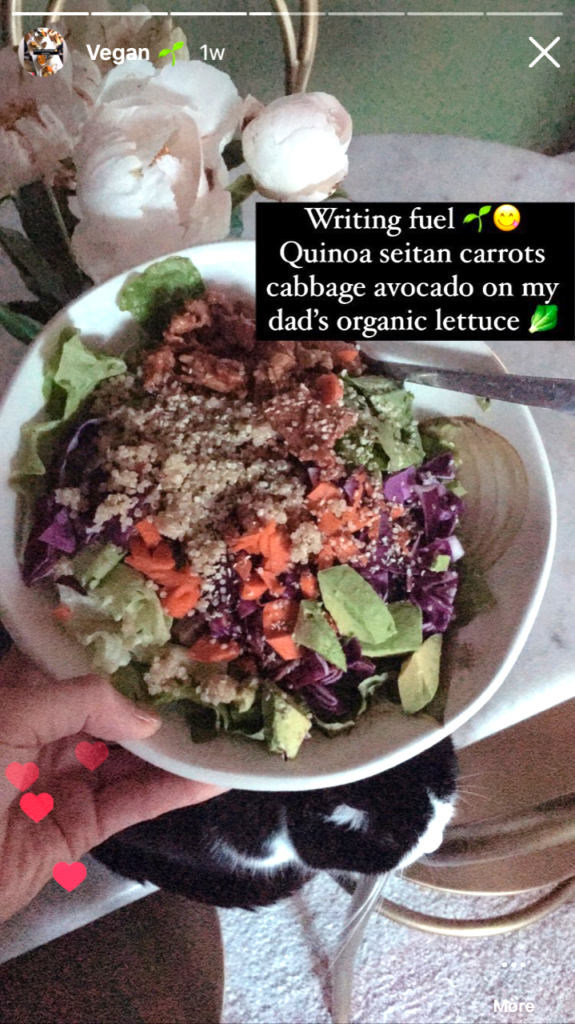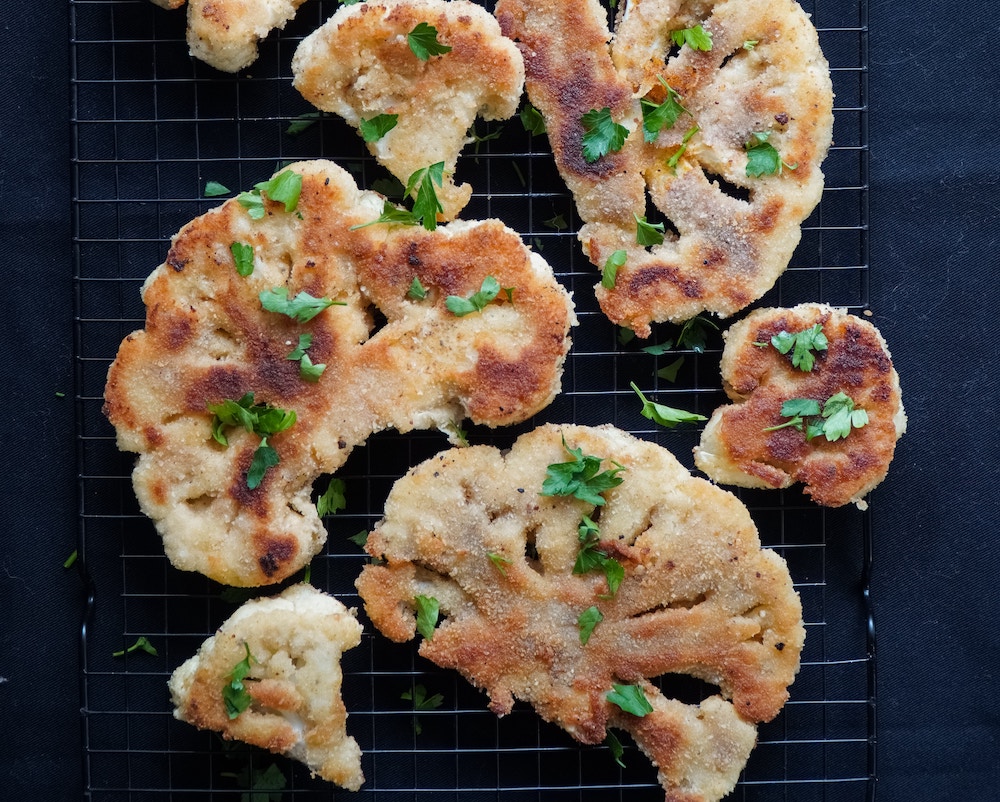Despite the fact that I’ve been vegan for 16 years, I don’t always reach the ideals of plant-based diet. In my heart, I’m an uncomplicated cook and eater. I am definitely more passionate about animals and the environment than I am about making or eating food. I’d honestly just think about something else, unless I’m actively hungry! I can also eat the same foods over and over again without getting tired. All this is to say, it is VERY easy for me to get into a food rut.
But around my 35th birthday, I realized that the touch-and-go nature of my diet had to change. I just didn’t feel like I was getting enough nutrients and energy from my food. While that served me fine when I was younger, it was starting to feel inadequate. My skin looked tired upon waking up, even though I was using skincare products that have had amazing effects previously. I didn’t have as much pep and energy. My muscles took longer to recover. All this made me think that I should try to diversify my diet and eat healthier. But I also have a stressful and busy work life, so it was important not to make my diet super demanding, mentally and physically. (And financially! Let’s not forget about the inflation!)
My diet before
My existing diet, while probably healthier than many (especially non-vegan) people’s, was kind of embarrassing to talk about publicly. First of all, I started my day with about 1/3 cup of vegan hot chocolate (so 1/2 packet) with oat milk (honestly, this hasn’t changed). I’m addicted to Treehouse Coconut Drinking Chocolate, which is so creamy—and its first ingredient is organic cacao followed by organic coconut sugar. I justify it by saying coconut sugar doesn’t spike your blood sugar as much (it really is amazingly steady!!) and that it has a healthy serving of iron, yada yada. But, after this decadent breakfast, my diet tended to descend further into chaos. Did I eat a lot of Amy’s Vegan Mac N’ Cheese out of the box for lunch? Yes. Even though I did add broccoli and peas into it. For dinner, I might have pasta with vegetables and tofu, or roasted veggies and tofu with one of those boxed couscous. Again, nothing so shockingly bad, and all organic vegan, but a lot of repetition and reliance on boxed staples. For vegetables, I turned mostly to broccoli, frozen peas, mushrooms, kale, and Brussels sprouts. I would snack on fruits—during winter usually citrus fruits—and end the night with another 1/3 cup of vegan hot chocolate (1/2 packet).
The Change
Around the time I resolved to eat healthier, I began having an acute craving for red cabbage, specifically salade de choux, which is a French cabbage slaw made with balsamic vinegar and olive oil. Red cabbage wasn’t something I bought regularly, but I realized I wanted to incorporate more color and raw veggies into my diet, so I (unconsciously at first) started buying 1+ red cabbage a week on average. I started by making a cabbage slaw (with carrots) a few times a week and eating it for lunch and dinner. When that got a bit repetitive, I also added it to stir fries and burritos.
The difference I felt upon adding raw red cabbage into my diet was almost instant. I felt waaaay more energy than I had in months, I woke up with more brightness in my skin, and could exercise longer and perform better. My mental focus was stronger, too. Since this was the major difference in my veeeery steady lifestyle (I’m a creature of habit!), I became curious and did some research.
Red cabbage, as you could guess from its intense purple color, is a nutritional powerhouse. It’s high in energy-producing B vitamins, calcium, magnesium (mood-boosting and energizing), iron (again, energy), and potassium, plus vitamins C, A, E, and K. Note that vitamin C is necessary for collagen synthesis, A protects from sun damage, regrows skin cells, and improves skin elasticity. Vitamin K is great for rosacea-sufferers (like me!). So no wonder I was seeing skin benefits.
Interestingly, it’s also high in glutamine, which you may have seen as L-glutamine at the vitamins aisle of your health food store. It’s a non-essential amino acid that is crucial for protein synthesis and helps with muscle recovery, healing, and growth. Athletes and bodybuilders take this to speed recovery and improve their performance. Although weight loss isn’t my primary goal, glutamine also helps shed unwanted weight because it boosts Human Growth Hormone (HGH) levels. Again, HGH is useful for all sorts of things like pep in your step and glowing skin!
More than one month later…
Eating a lot of red cabbage has had such a noticeable effect that when I go to the grocery store, I reach for it unconsciously. The biggest difference for me has to be in my energy level and my skin—it’s noticeably brighter and less sun-damaged. I also feel less hungry between meals. I make better food choices the rest of the time, because my palate is more accustomed to the fresh, crunchy, whole plant flavors.
Here’s my basic (and favorite) way to eat a lot of cabbage.
Salade de Choux
1 head of red cabbage
1 handful of parsley (either Italian or regular)
lots of extra virgin olive oil
lots of balsamic vinegar
a couple of carrots
salt to taste
The hardest part of this recipe is just chopping cabbage as fine as you can! I’m not super patient so I chop it medium-fine, and that is okay. Peel and chop carrots, too. Actually, also chop parsley. Put all those together in a big bowl, add healthy glugs of olive oil and balsamic vinegar. Mix well, taste, and adjust seasoning to taste. For ideal results, cover and put in the fridge for a little bit to let the veggies mingle. It tastes even better the next day—crunchy, naturally sweet, and so satisfying.
Do you love red cabbage?
Related: The One Supplement Our Beauty Editor Always Restocks
I’ve Been Eating A Salad Every Day For The Past 4 Years. Here’s What Happened
Get more like this—Sign up for our daily inspirational newsletter for exclusive content!
__
Photo: Peaceful Dumpling





